Melrose Abbey – The Heart of Robert the Bruce
This is post number thirteen from a recent trip to Great Britain with Canadian military tour specialists Liberation Tours. Titled Medieval Britain: Castles, Cannons & Crowns our group has been having a blast travelling to some of the most important historical sites in England including Stonehenge, Salisbury Cathedral, HMS Victory, Warwick Castle, Fountains Abbey and several major battle sights. Our last stop was at the Roman settlement of Vindolanda just beside Hadrian’s Wall and almost on the Scottish border which is where we are headed now. After crossing over we’ll visit Melrose Abbey before continuing on the Edinburgh. It promises to be an interesting day. I hope you can join us.
The drive up the A68 from Vindolanda is among the most scenic we’ve yet had on this trip as we pass through Northumberland National Park and the Cheviot Hills. It is one of the most popular hiking areas in Britain and if you are interested here is a guide to many of the best routes. At Carter Bar, the site of one of the last battles between the English and the Scots in 1575, we reach the Scottish border and pull over into the parking lot where a piper welcomes us with the skirl of the bagpipes.
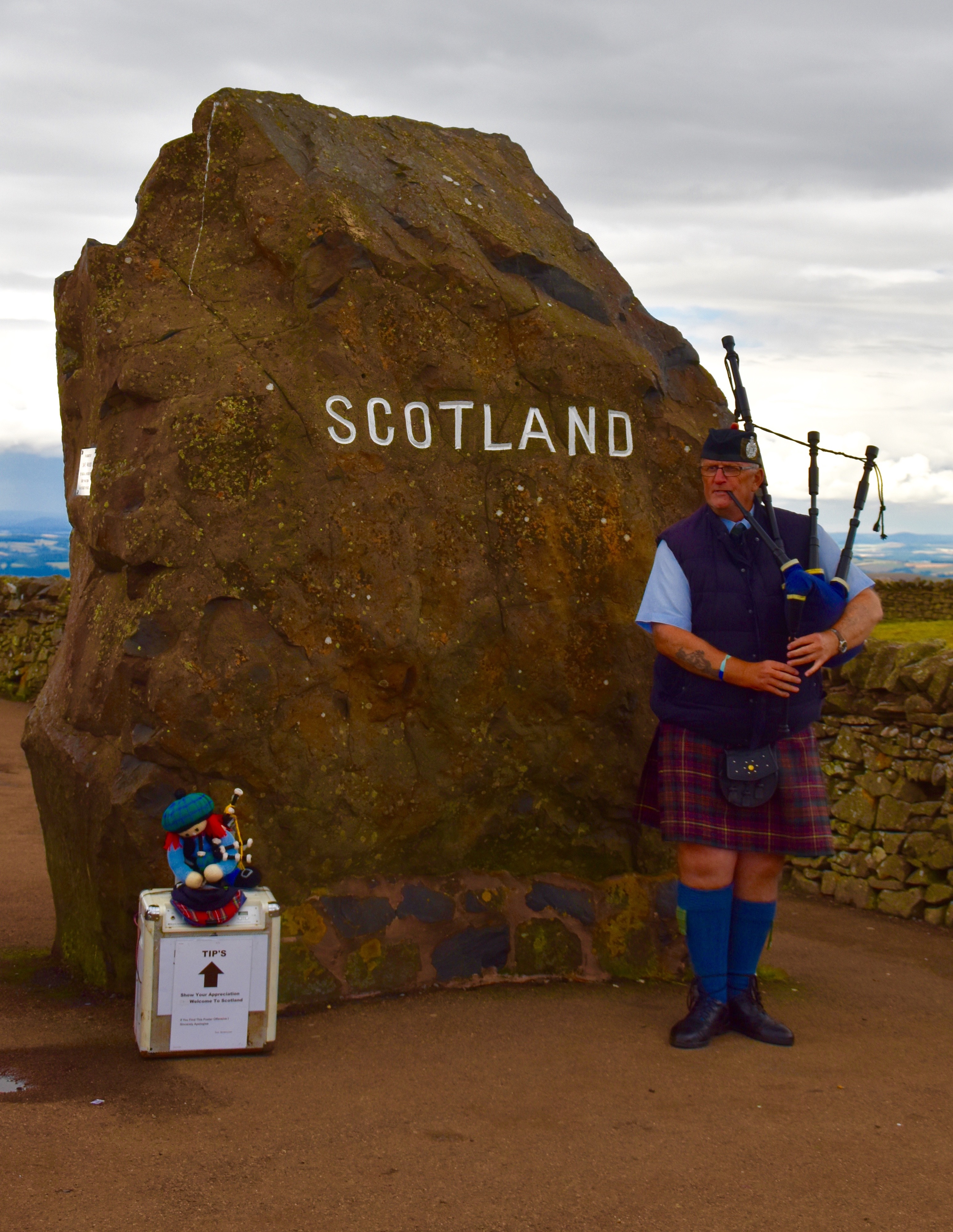
It’s a perfect place for a group photograph, but there’s something else we need to do first to fulfill another Scottish tradition – have a wee dram to celebrate our arrival in Caledonia.
That’s Stewart our bus driver. who doesn’t look old enough to drive let alone drink (which he doesn’t) brandishes a bottle of Glenfiddich, offering a nip to our friend Rob Purdy.
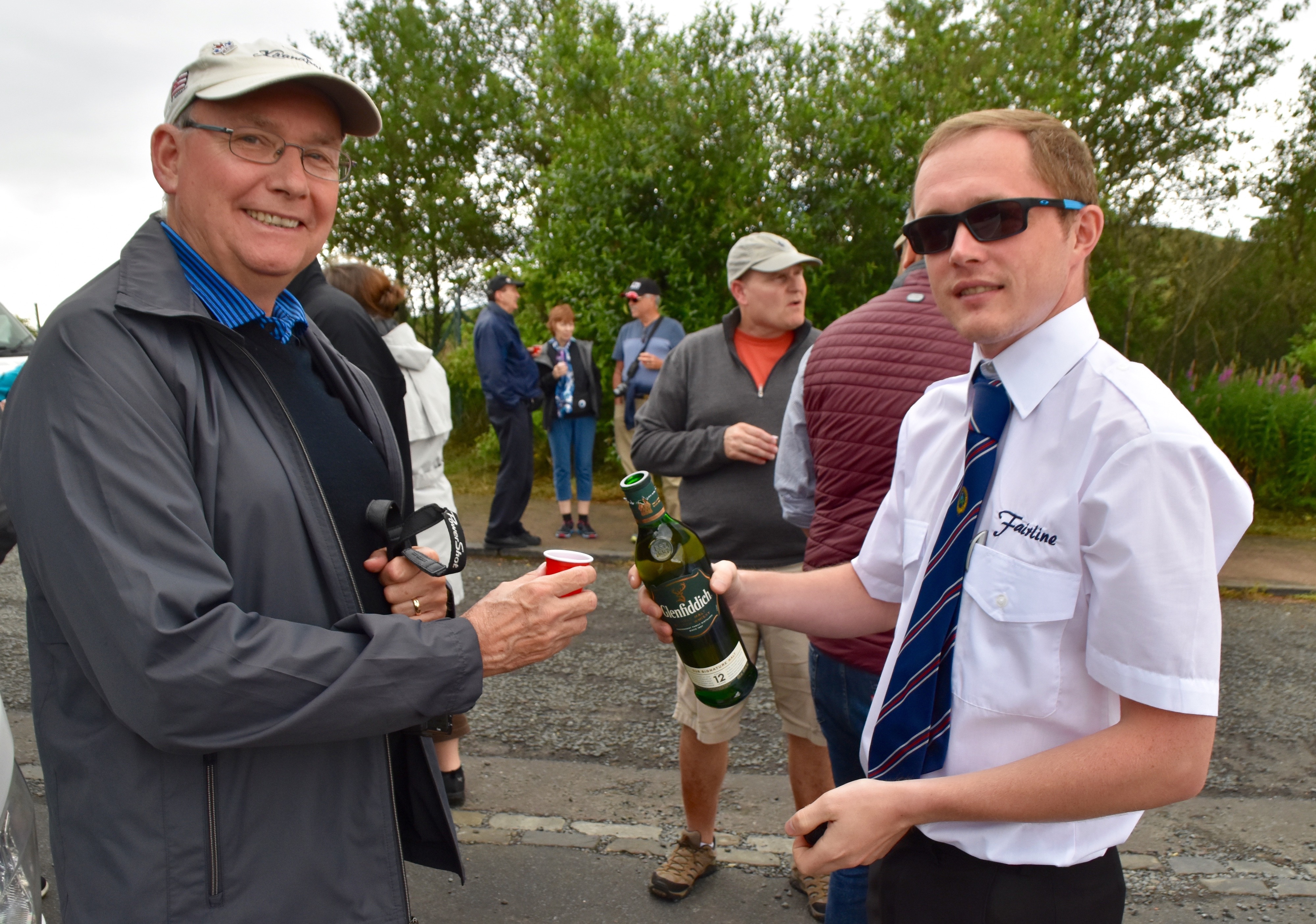
This is our tour leader Phil Craig joining in the quest to take away the chill of this surprisingly cool afternoon.
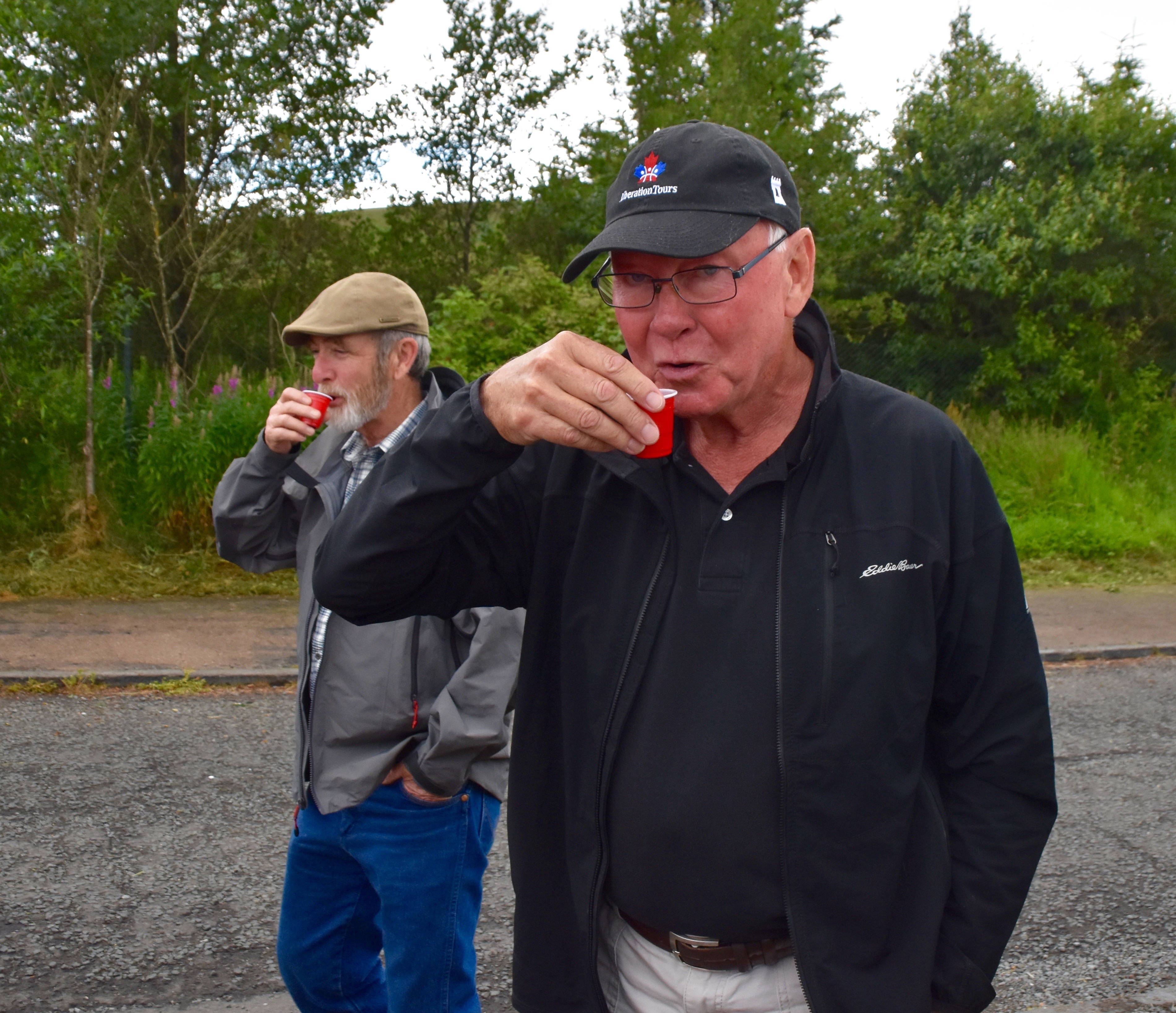
Our bodies now imbued with the Scottish Water of Life we are now ready for that group photo.
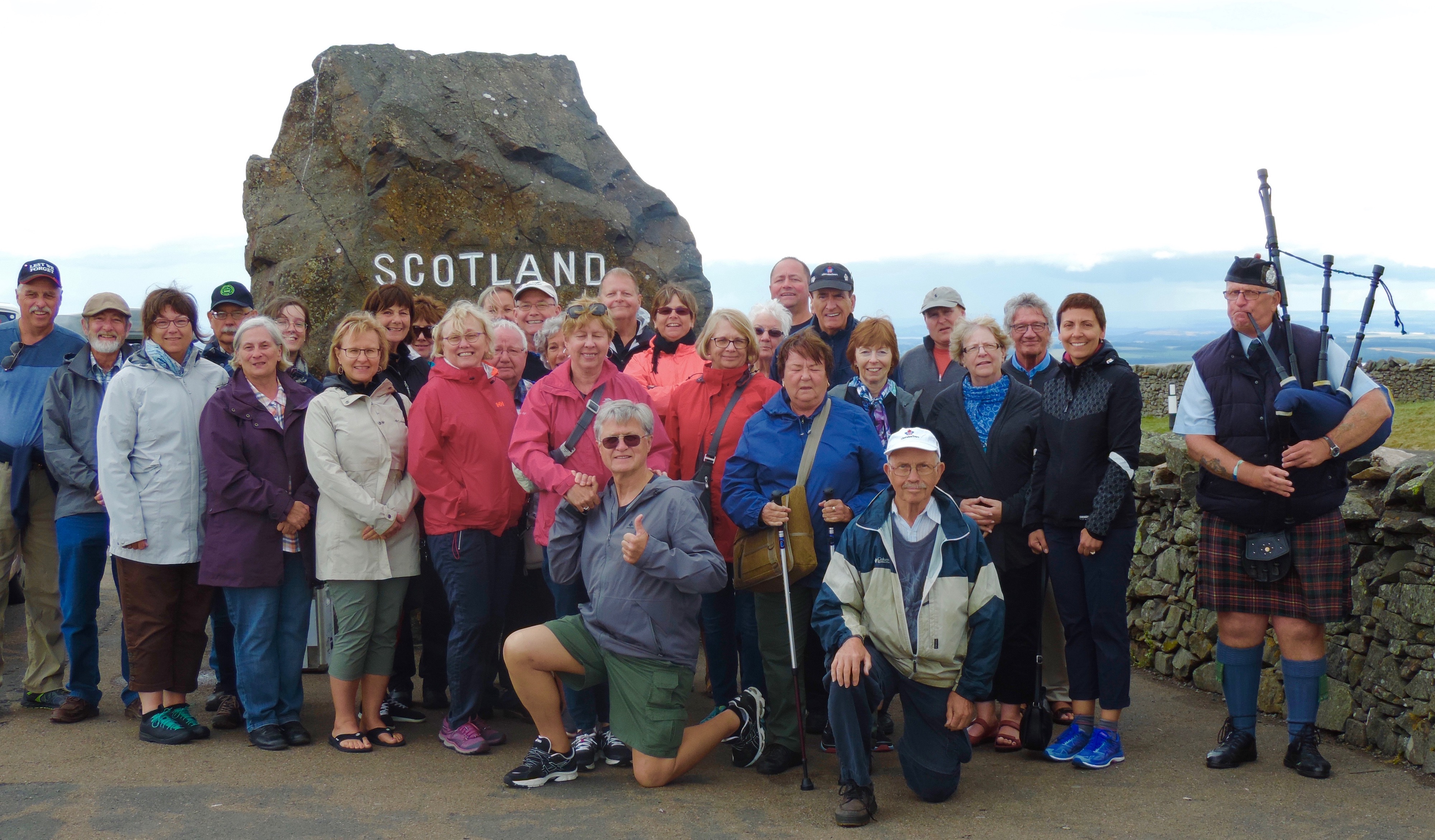
Not far from Carter Bar there is another famous place for people to stop and admire the Scottish countryside – Scott’s View, which is named for the writer and practical inventor of all the things we tend to think of as Scottish – Sir Walter Scott. He lived not far from here and would ride up here on horseback as often as he could to get inspiration from the view. Our climb via a very narrow country lane is a little more tricky, but we do get to the lookout and the view is certainly inspirational.
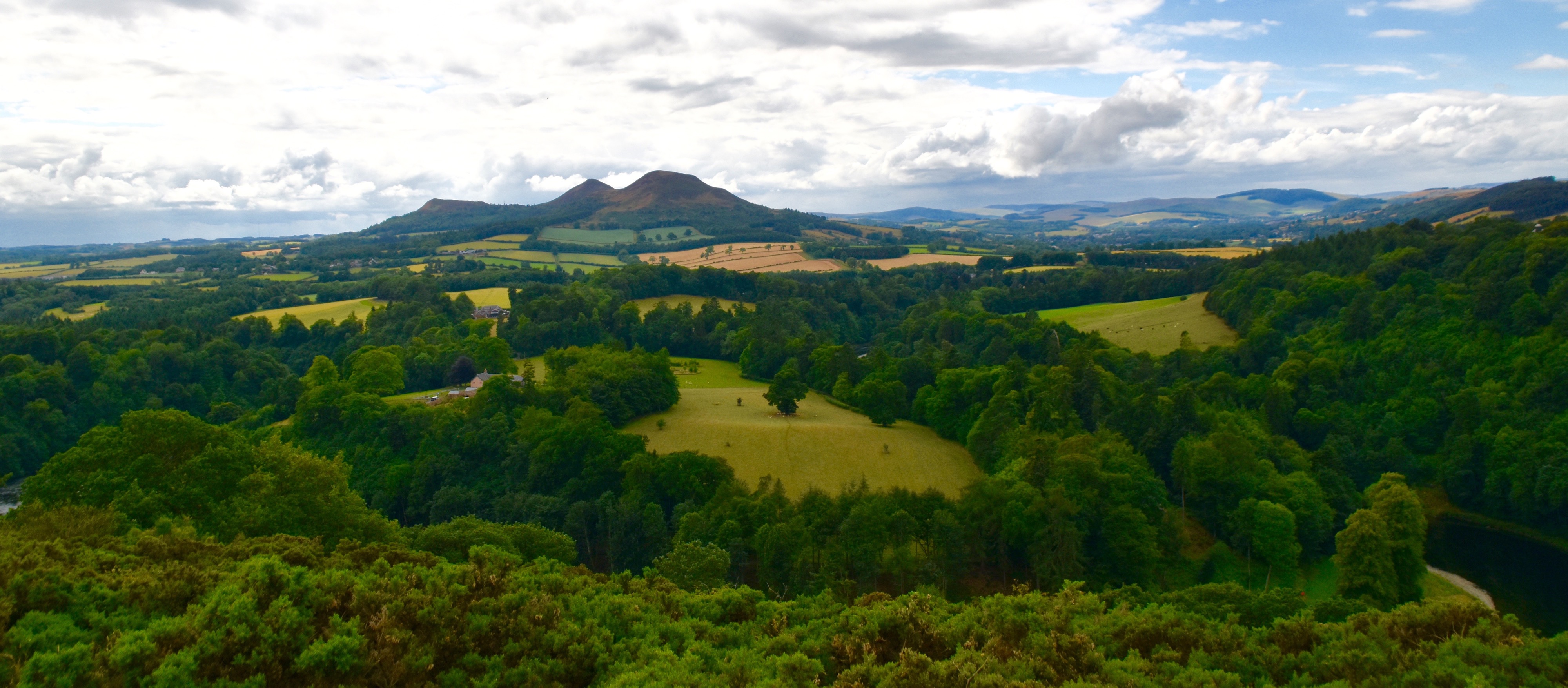
Those are the Eildon Hills in the distance, three extinct volcanoes actually.
Since my wife is a Scott whose ancestors were border dwellers then it is mandatory to take her picture at Scott’s View
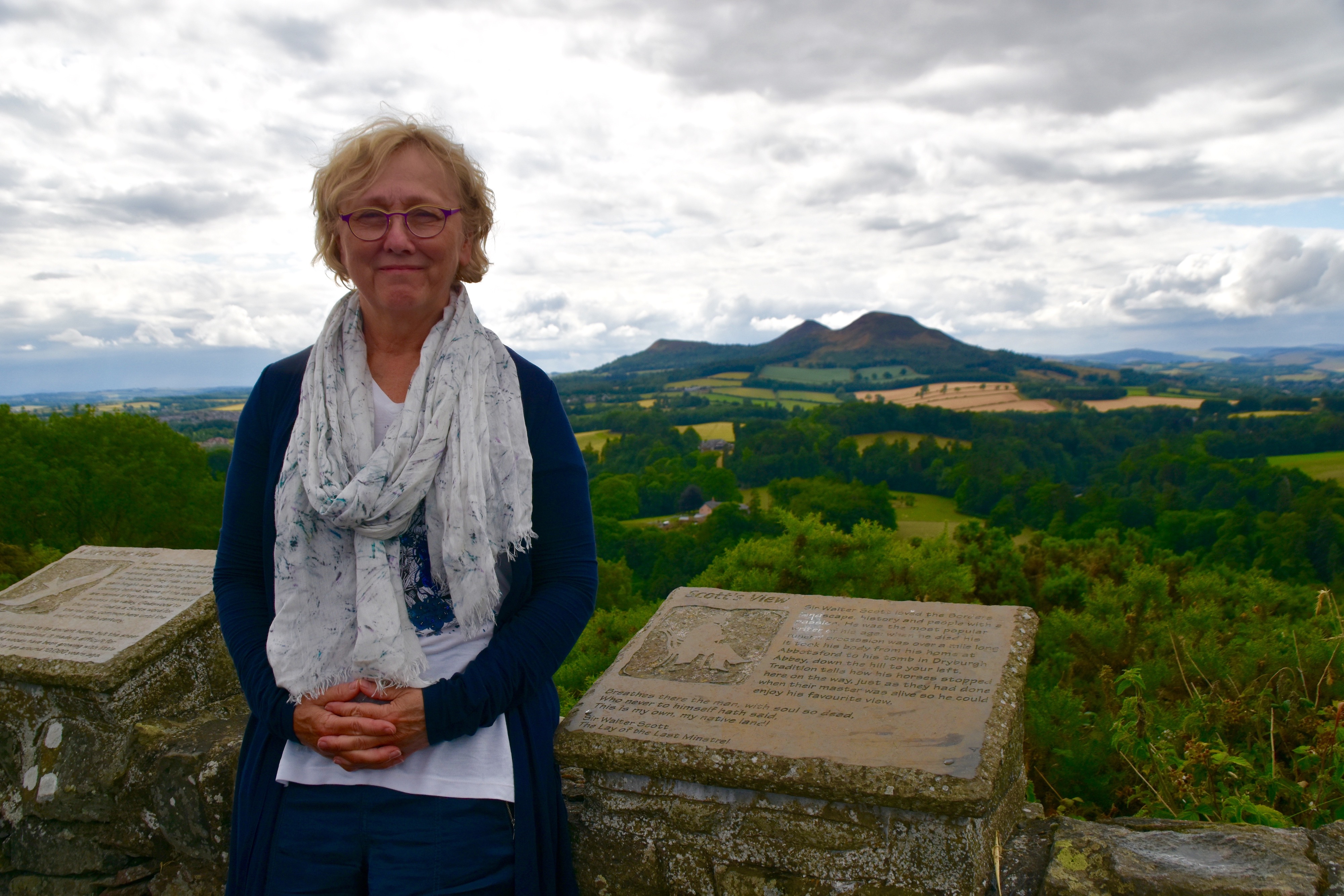
Melrose Abbey
Earlier on this trip we visited the ruins of Battle Abbey and later Fountains Abbey, both of which are haunting in their skeletal remains and I’m expecting the same thing from Melrose Abbey where we are headed next. The town of Melrose is picturesque in the extreme and beckons one to spend more time there than just stopping at the abbey. I’ve already made a mental note to add this to any future Scottish itineraries.
Melrose Abbey was built and rebuilt a number of times starting as early as 650, but the present ruins are clearly Gothic in architectural style and date from the high Medieval period. Although attacked by English armies several times it actually escaped the fate of many English abbeys that were either seized or destroyed during the Protestant Reformation. This was the centre for the Cistercians in Scotland up until the mid-1500’s after which it just seems to have slowly crumbled away as the last monk died in 1590.
It has long been reckoned as one of the best looking of Britain’s abandoned monasteries and has been attracting artist’s and poet’s attention for centuries. Sir Walter Scott wrote of it,” If thou wouldst view fair Melrose aright, Go visit it by the pale moonlight.”
And that’s exactly what the great English painter J.W.W.Turner did in this work.
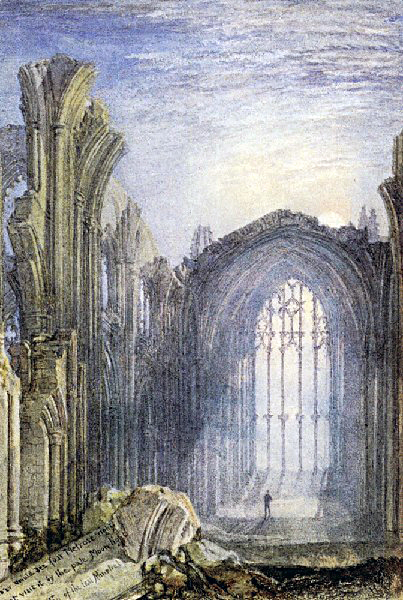
So my expectations for the beauty of Melrose Abbey were pretty high. Were they met? In spades. The pink hue of the building stone gives Melrose Abbey a distinct look unlike any other. It really is breathtakingly beautiful. Some of that is actually due to Sir Walter Scott who embarked on a partial restoration project in the early 1800’s that was meant to emphasize the gothic archways and flying buttresses that are the hallmark of these structures.
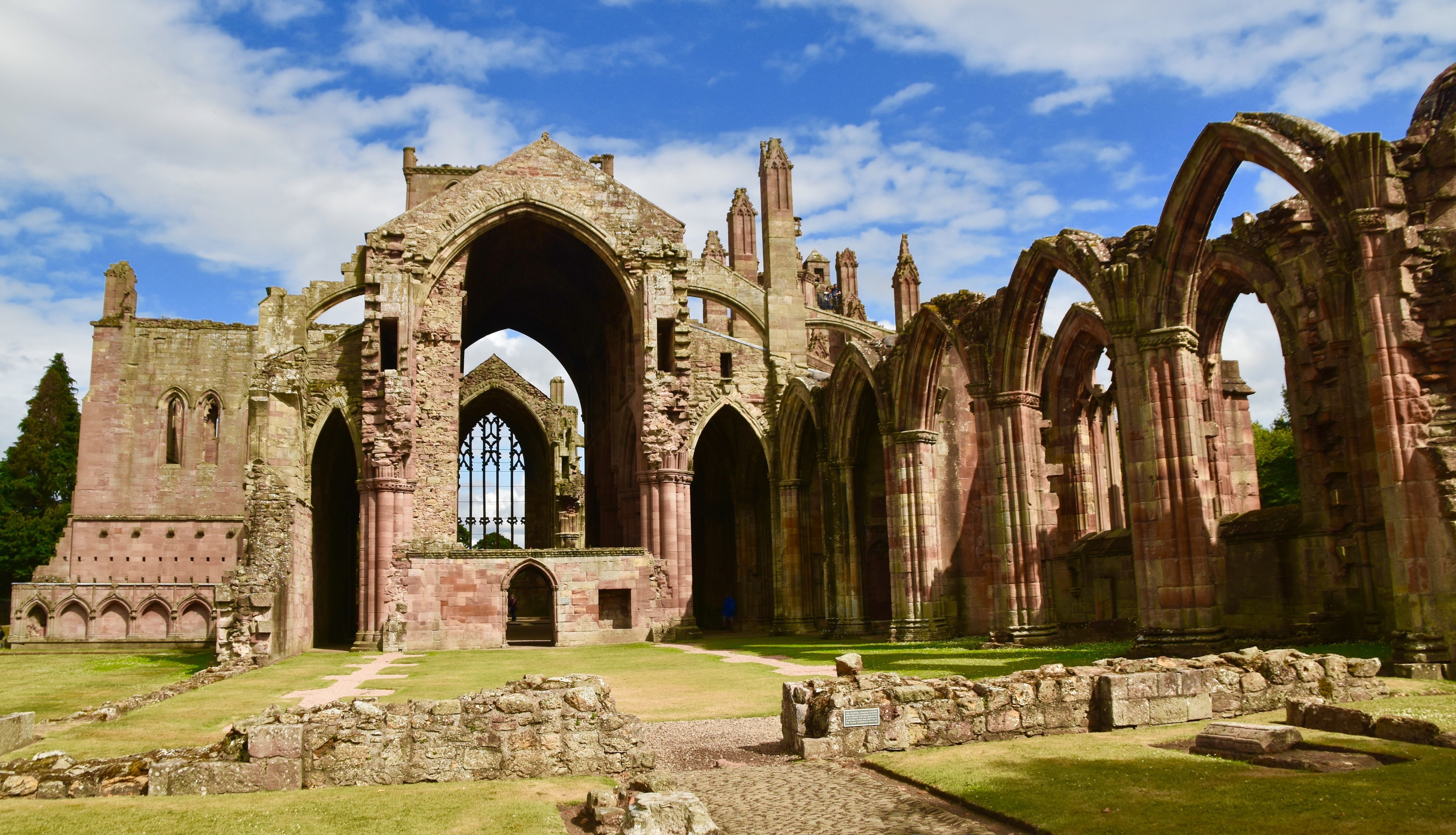
This is the view from inside Melrose Abbey.
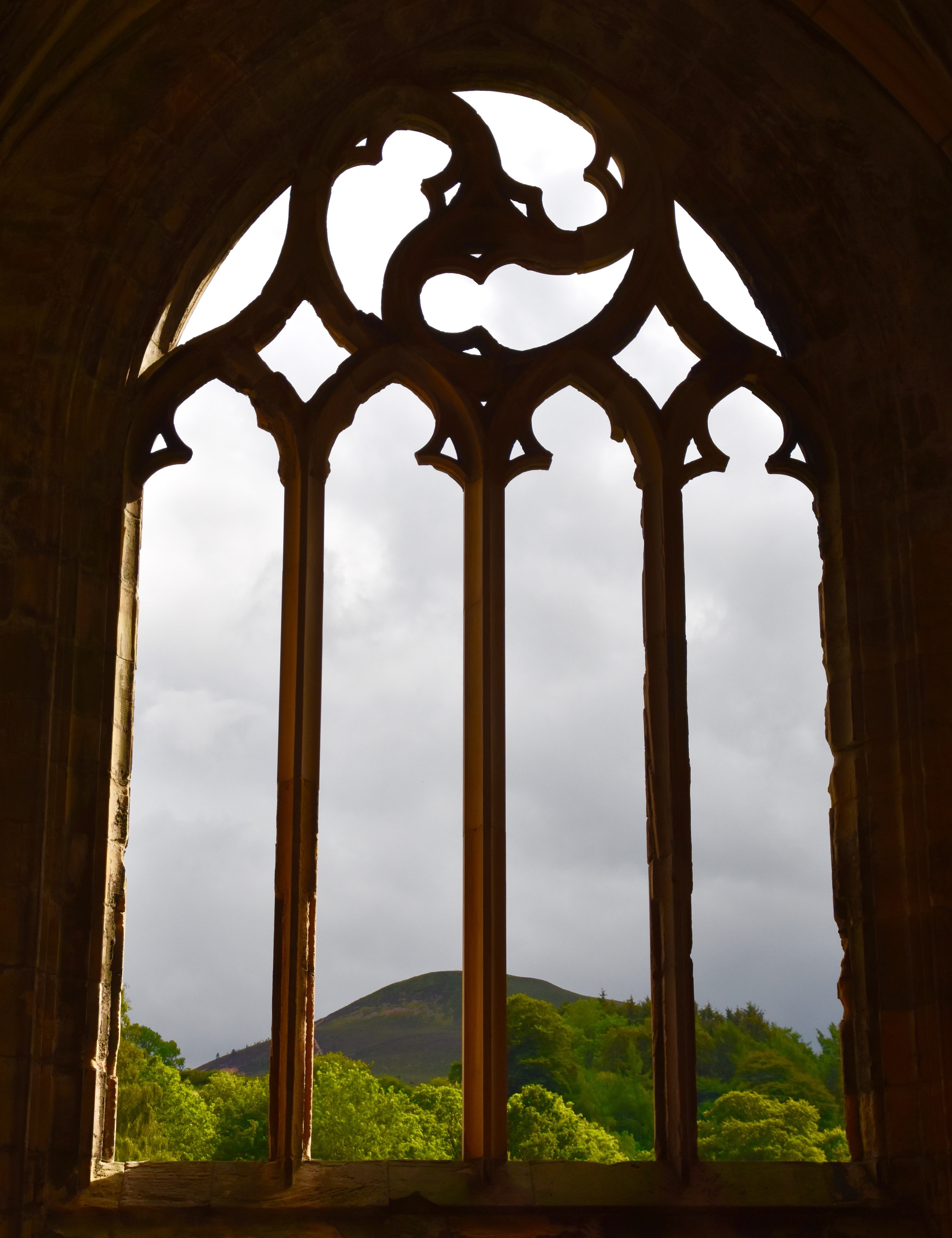
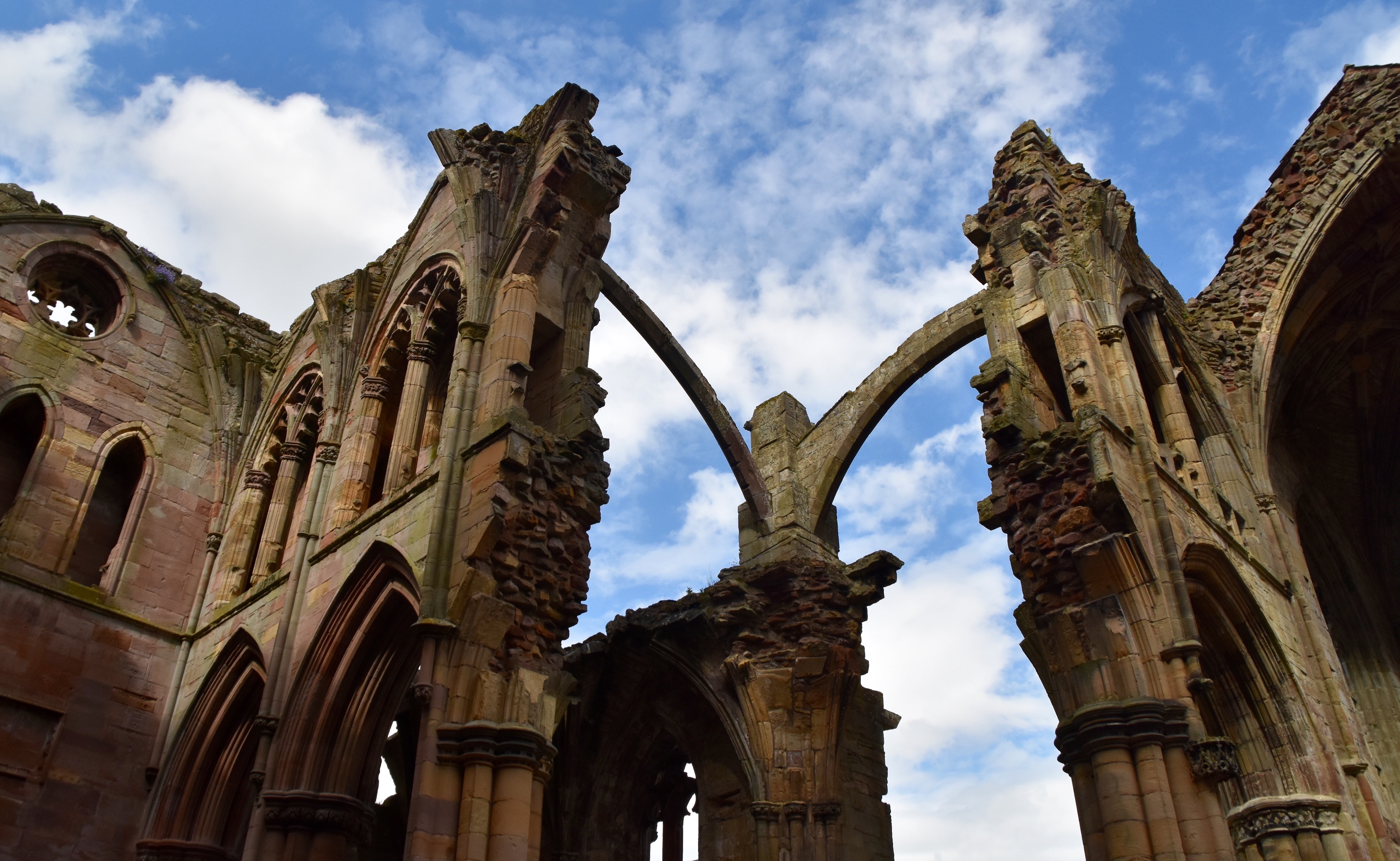
This photo shows just how architecturally creative these Medieval craftsmen were – how to you get such an appearance of delicate fragility in this huge window while at the same time holding up hundreds of tons of stone?
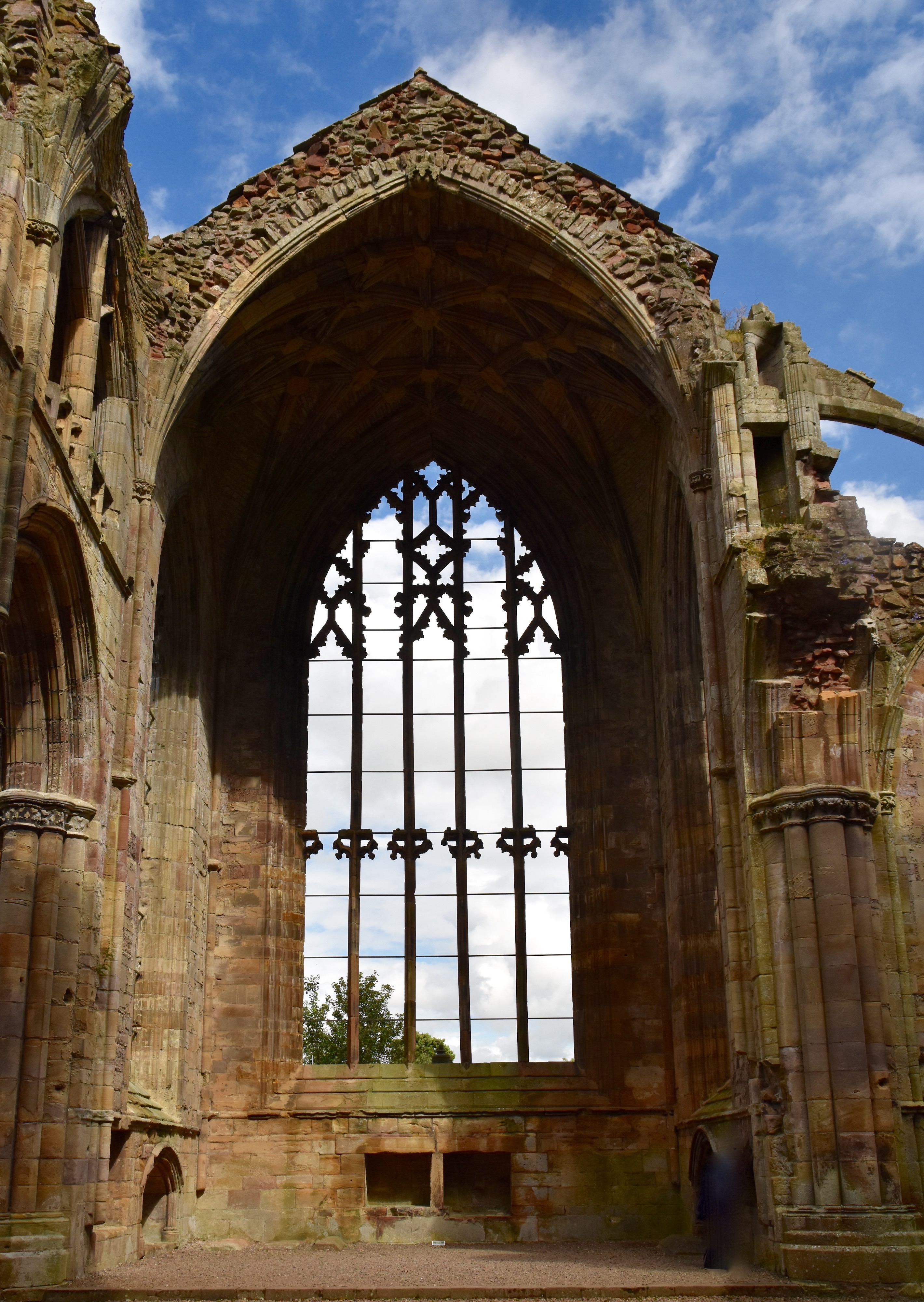
The Heart of Robert the Bruce
Robert the Bruce is undoubtedly one of the most well known and important of Scottish leaders securing the great victory for the Scots over the English at Bannockburn in 1314 – we’ll be visiting there later on this trip. Contrary to what a lot of people seem to automatically think about Scottish history, he was not a Highlander nor really even purely Scottish. He was descended from Anglo-Normans and the use of the word ‘the’ between first and second names is from the French practice of using the word ‘de’, meaning ‘from’ in the same context.
On my last visit to Scotland I played golf at Turnberry where you’ll find the ruins of Turnberry Castle on the shores of the Irish Sea between the 9th and 10th holes. This is where Bruce was most likely born. It’s an absolute crime against history that this property is now owned by the same idiot who currently resides at 1600 Pennsylvania Ave., Washington, D.C.

After winning the First war of Scottish Independence Bruce ruled until his somewhat sudden death at age 55 from causes as yet unknown. By written request he wanted his heart to be buried at Melrose Abbey while the rest of it went to Dunfermline where most Scottish kings were interred. However, his boon companion James Douglas aka The Black Douglas, took it on a bit of a detour when he went on a crusade to the mid-East and was wiped out along with most of his entourage. Fortunately the heart of The Bruce was recovered and apparently buried in Melrose Abbey and forgotten about for over 500 years when it was rediscovered in 1921. The workmen who found it reburied it and then they forgot about it themselves. Only in 1996 was it found for a second time and properly identified and memorialized with this plinth. Hopefully it won’t go missing again.
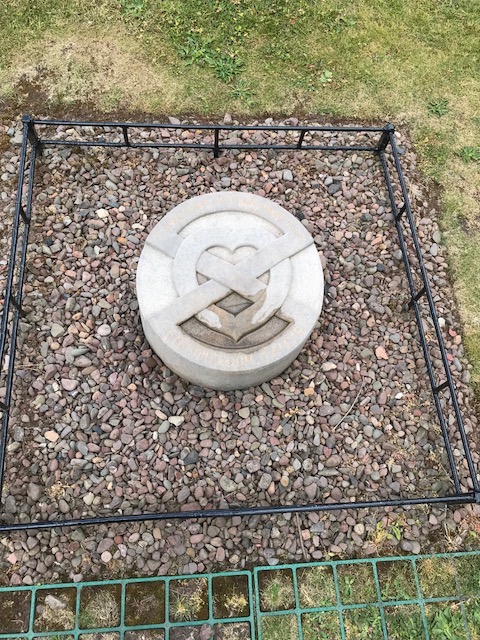
After we finish our tour of Melrose Abbey, Phil gathers us around in a semi-circle as he and the youngest member of our troupe belt out a rendition of Flower of Scotland, the National Anthem.
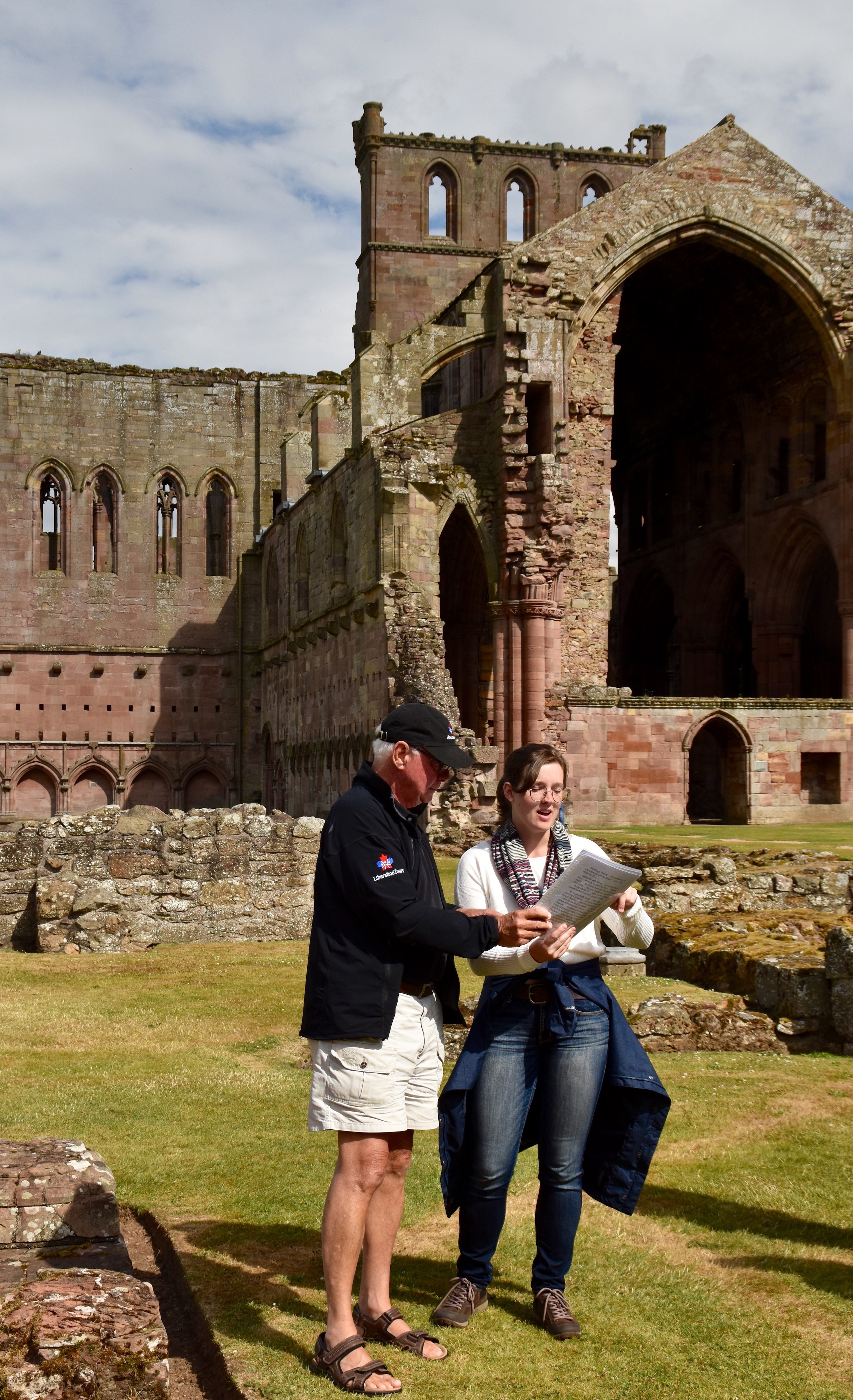
You can follow along with them. I’m sure you’ll sound better than we did.
Off to Edinburgh next – see you there.

